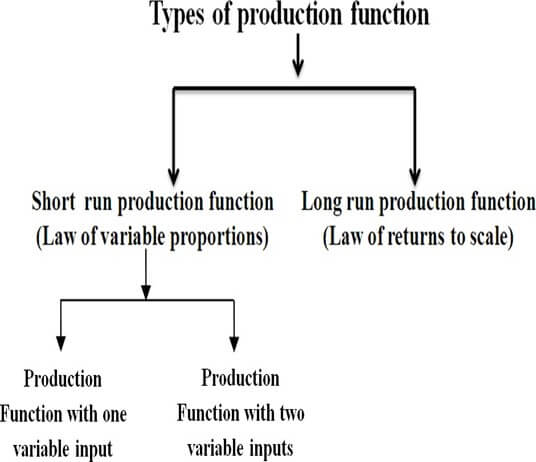Production Function
The production function expresses a functional relationship between physical inputs and physical outputs of a firm at any particular time period. The output is thus a function of inputs. So, production function is an input – output relationship. Mathematically production function can be written as:
Q = f(L1, L2, C, O, T)
Let’s denote:
- Q: Output
- f: Function of L1 (Land)
- L2: Labour
- C: Capital
- O: Organization
- T: Technology
Here output is the function of inputs. Hence output becomes the dependent variable and inputs are the independent variables.
Definition:
Samuelson defines the production function as “The technical relationship which reveals the maximum amount of output capable of being produced by each and every set of inputs.”
Michael R Baye defines the production function as “That function which defines the maximum amount of output that can be produced with a given set of inputs.”
Assumptions:
Production function has the following assumptions:
- The production function is related to a particular period of time.
- There is no change in technology.
- The producer is using the best techniques available.
- The factors of production are divisible.
- Production function can be fitted to a short run or to long run.

production function
